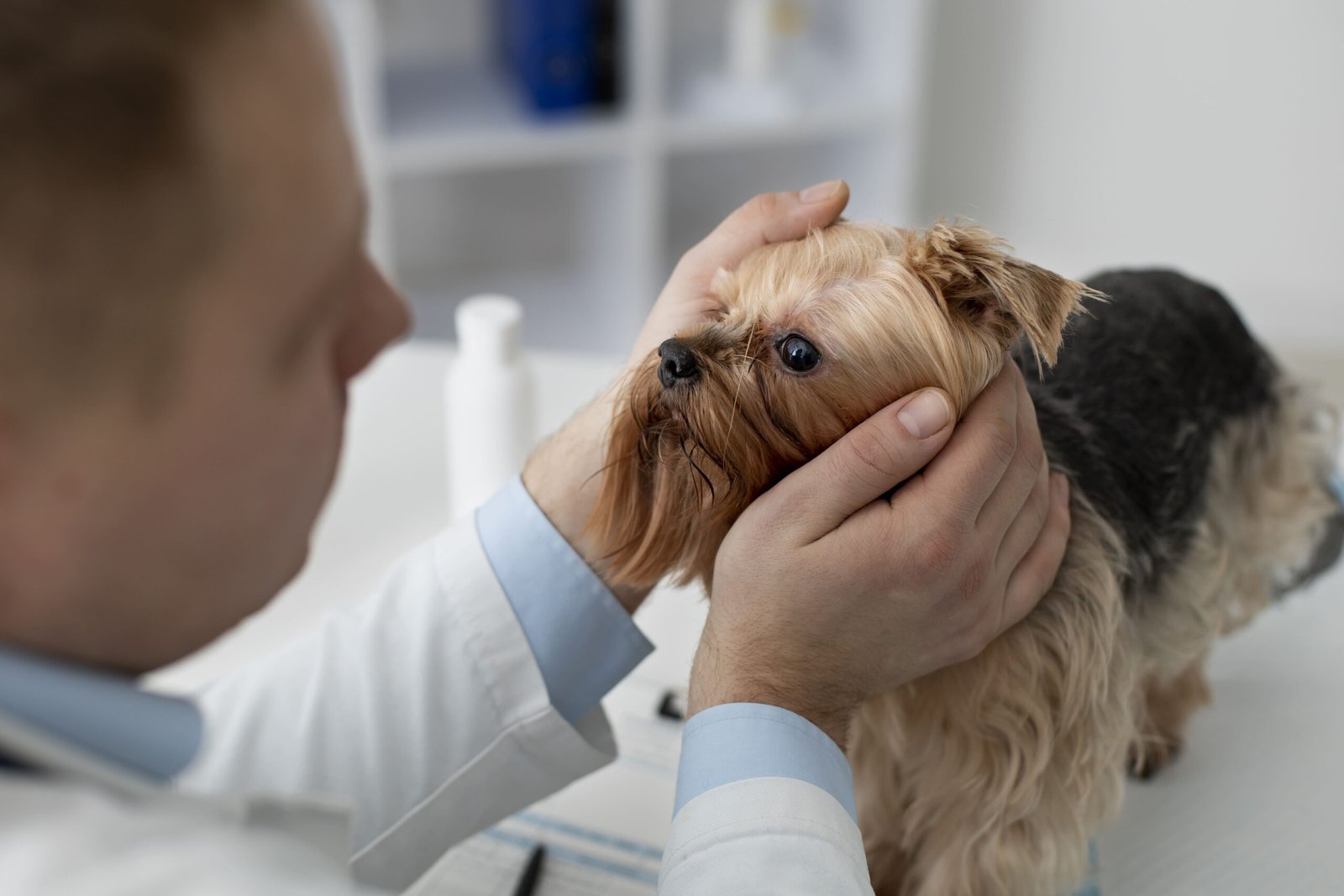
Recognizing Pet eye health is crucial for maintaining their overall health and quality of life. Early detection can prevent further complications and help manage any underlying conditions effectively.
What Causes Vision Problems in Pets?
Vision issues in pets can arise from various factors, including:
- Genetic Predisposition: Certain breeds are more susceptible to eye disorders. For instance, Cavalier King Charles Spaniels are prone to conditions like keratoconjunctivitis sicca (dry eye).
- Aging: As pets age, they may develop cataracts, leading to a cloudy appearance in the eyes and diminished vision.
- Infections and Inflammation: Conditions such as conjunctivitis or uveitis can cause redness, swelling, and discomfort, affecting vision.
- Trauma: Injuries to the eye can result in immediate or progressive vision loss.
- Systemic Diseases: Illnesses like diabetes can lead to complications such as cataracts.
Common Signs Your Pet May Have Vision Problems:
Be vigilant for the following indicators that may suggest your pet is experiencing vision issues:
Behavioral Changes:
- Increased bumping into furniture or walls.
- Reluctance or hesitation to move in unfamiliar environments.
- Unwillingness to go up or down stairs.
Physical Symptoms:
- Cloudiness or a bluish-gray hue in the eyes.
- Redness, swelling, or discharge.
- Visible third eyelid or changes in eye color.
- Excessive tearing or unusual eye drainage.
How to Diagnose Vision Problems in Pets:
If you notice any of the above signs, consult your veterinarian promptly. Diagnosis may involve:
- Comprehensive Eye Examination: Assessing the eye’s structure and function.
- Schirmer Tear Test: Measuring tear production to detect dry eye conditions.
- Tonometry: Measuring intraocular pressure to check for glaucoma.
- Ophthalmoscopy: Examining the retina and optic nerve for abnormalities.
Treatment Options for Vision Problems in Pets:
Treatment varies based on the underlying cause and may include:
- Medications: Antibiotic or anti-inflammatory eye drops for infections or inflammation.
- الجراحة: Procedures such as cataract removal can restore vision in certain cases.
- Lifestyle Adjustments: For irreversible vision loss, creating a safe and consistent environment helps pets navigate more easily.
Prevention Tips to Protect Your Pet’s Vision:
Maintaining your pet’s eye health involves:
- Regular Veterinary Check-Ups: Early detection through routine exams can prevent or mitigate vision problems.
- Eye Hygiene: Gently cleaning around the eyes to remove discharge and prevent infections.
- Protective Measures: Using pet-safe eyewear during activities that pose a risk of eye injury.
- Monitoring for Symptoms: Being alert to changes and seeking prompt veterinary care if issues arise.
الخاتمة
Early recognition of Pet eye health is essential for their well-being. By staying observant and proactive, you can help ensure your pet maintains good eye health and quality of life.
FAQs:
Q: How can I tell if my pet is going blind?
A: Signs include bumping into objects, reluctance to move in new environments, and changes in eye appearance such as cloudiness or redness.
Q: Are certain breeds more prone to eye problems?
A: Yes, breeds like Cavalier King Charles Spaniels and Bloodhounds have higher predispositions to specific eye conditions.
Q: Can vision loss in pets be reversed?
A: It depends on the cause; some conditions like cataracts can be treated surgically, while others may result in permanent vision loss.
Q: How often should my pet have eye examinations?
A: Annual veterinary check-ups are recommended, but more frequent exams may be necessary for breeds prone to eye issues.
Q: What should I do if I notice discharge from my pet’s eyes?
A: Consult your veterinarian, as discharge can indicate infections or other eye conditions requiring treatment.
Learn more about your pet’s health:

